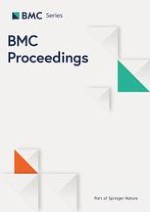Published in:

Open Access
01-12-2009 | Proceedings
Detection of imprinting and heterogeneous maternal effects on high blood pressure using Framingham Heart Study data
Authors:
Jingyuan Yang, Shili Lin
Published in:
BMC Proceedings
|
Special Issue 7/2009
Login to get access
Abstract
Both imprinting and maternal effects could lead to parent-of-origin patterns in complex traits of human disorders. Statistical methods that differentiate these two effects and identify them simultaneously by using family-based data from retrospective studies are available. The usual data structures include case-parents triads and nuclear families with multiple affected siblings. We develop a likelihood-based method to detect imprinting and maternal effects simultaneously using data from prospective studies. The proposed method utilizes both affected and unaffected siblings in nuclear families by modeling familial genotypes and offspring's disease status jointly. Maternal effect is usually modeled as a fixed effect under the assumption that maternal variant allele(s) has (have) identical effect on any offspring. However, recent studies report that different people may carry different amounts of substances encoded by the mother's variant allele(s) (called maternal microchimerism), which could result in heterogeneity of maternal effects. The proposed method incorporates the heterogeneity of maternal effects by adding a random component to the logit of the penetrance. Our method was applied to the Framingham Heart Study data in two steps to detect single-nucleotide polymorphisms (SNPs) that may be associated with high blood pressure. In the first step, SNPs that affect susceptibility of high blood pressure through minor allele, genomic imprinting, or maternal effects were identified by using the proposed model without the random effect component. In the second step, we fitted the mixed effect model to the identified SNPs that have significant maternal effect to detect heterogeneity of the maternal effects.